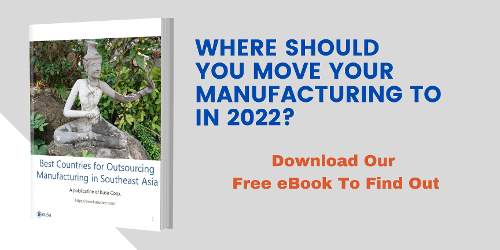If you think about it, most if not all of the items in your house either arrived by cargo ship or...
What Is Industry 4.0?
Technological advancement in the past several decades has accelerated considerably and the rate at which new technologies are developed and integrated continues to increase.
Currently, we are on the eve of Industry 4.0. Some consider this new age as the Fourth Industrial Revolution, an age which will significantly revolutionise the manufacturing sector as a whole.
In this week’s article, we will be discussing Industry 4.0. More specifically, we will be discussing the history of the different industrial revolutions, what Industry 4.0 is, and why Singapore is embracing Industry 4.0
.png?width=600&name=Untitled%20design%20(5).png)
History of the Industrial Revolutions
Prior to the First Industrial Revolution in the mid 18th century, most goods, especially textiles, were manufactured at home, meaning goods were unable to be produced en-masse. However, the development of steam engines and the factory system thereafter transformed how goods were manufactured, allowing for the first time mass production. Coal power and water power became the main means of powering these new factories, according to the BBC.
On the other hand, the Second Industrial Revolution took place in the 19th century, and was heralded by the development and mass adoption of electricity. It was around this time that the electric motor, electric generator, and the electric railways were developed, writes the World Atlas. Both the steam engine and electric railways helped transform transportation which facilitated Western industrialisation, states the BBC.
With regard to the Third Industrial Revolution, the Institute of Entrepreneurship Development writes, “The third revolution brought forth the rise of electronics, telecommunications and, of course, computers. The third industrial revolution opened the doors to space expeditions, research, and biotechnology through the new technologies.” It is in this Third Industrial Revolution that we currently live in and in which we continue to see the digitalisation of manufacturing.
What is Industry 4.0?
However, where previous industrial revolutions were separated by about a hundred years, many believe we are entering a new industrial revolution spearheaded by the onset of Industry 4.0. “Put simply, Industry 4.0 makes factories “smart.” Such technologies as the industrial Internet of Things, artificial intelligence, and cyber-physical systems interact seamlessly, communicating and adjusting continuously,” writes Boston Consulting Group.
According to Boston Consulting Group, nine key technologies have driven Industry 4.0: Additive manufacturing (e.g., 3D printing), augmented reality, autonomous robots, big data and analytics, cloud technologies, cybersecurity, horizontal and vertical systems integration, Industrial Internet of Things, and simulation technologies. Many consider big data and analytics, cloud technologies, and Industrial Internet of Things as the most important Industry 4.0 technologies.
This is due to the fact that they can help integrate internal operations with larger global supply chains. They can also enable companies with similar experiences to learn from one another more effectively, reports Forbes. This is especially true following the novel COVID-19 pandemic. According to McKinsey, “Industry leaders are leveraging Industry 4.0 solutions: 39 percent have implemented a nerve-center, or control-tower, approach to increase end-to-end supply-chain transparency, and around a quarter are fast-tracking automation programs to stem worker shortages arising from COVID-19.
Why is Singapore Embracing Industry 4.0?
.png?width=600&name=Untitled%20design%20(6).png)
It is in this context that Singapore began embracing Industry 4.0. The Business Times reports that “[The] successful adoption of the Industry 4.0 technologies, and the development of a higher skilled workforce, are key to advancing Singapore's goals of becoming the global innovation and talent hub for advanced manufacturing.” To aid this shift, initiatives such as the Manpower Ministry’s Human Capital Initiative and the the Agency for Science, Technology and Research (A*STAR)’s Jurong Innovation District and Advanced Remanufacturing and Technology Centre have been introduced.
Most of these programmes target SMEs specifically, to offer a more comprehensive manufacturing sector transformation, writes Open Gov. “This collaboration is also an example of how local SMEs can deploy their new solutions to help other local SMEs speed up digital transformation in their factories, driving increased digitalisation across the board.”
As a result, approximately 83% of Singaporean SMEs have begun implementing digital transformation measures and Singapore as a whole are among the top 25 countries in the world in terms of being best positioned to benefit from the changing nature of production and Industry 4.0 according to the World Economic Forum.
In Conclusion
It can be argued that Industry 4.0 can offer endless opportunities for companies, assuming they are willing to invest in and promote Industry 4.0 capabilities.
Evidently, Singapore has begun capitalising on new Industry 4.0 developments, making them among the few countries worldwide spearheading Industry 4.0-manufacturing sector integration. These reasons make Singapore a promising and exciting destination for manufacturers.
-1.jpg?width=146&height=50&name=Kusu%20(1)-1.jpg)


-1.png?height=200&name=Untitled%20design%20(22)-1.png)

